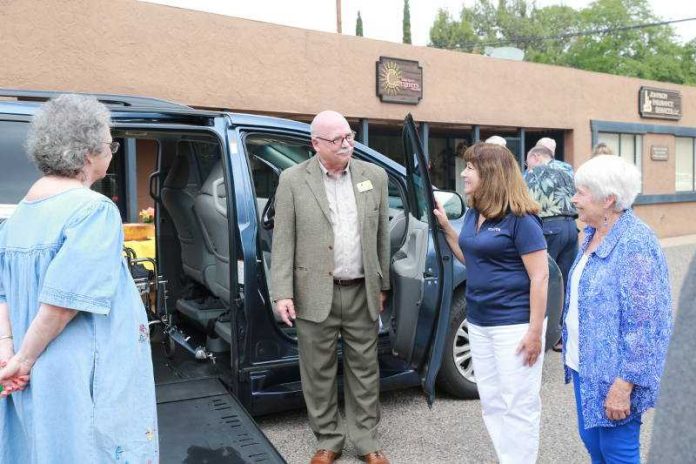With the tax filing deadline fast approaching on Tuesday, April 17, local schools and nonprofits are redoubling their efforts to garner donations through tax credits.
A tax credit, unlike a tax deduction, is a dollar-for-dollar reduction of state income tax owed. By donating to a qualified organization and filing it as a tax credit, individual taxpayers are given some say in where their state taxes go.
In recent years, the state has extended the deadline for applying tax credits to the date taxes are due — so taxpayers can donate and write it off as a tax credit for their 2017 taxes up until April 17, 2018.
“A credit is always better than a deduction,” said Charlene Zack, an enrolled agent, because tax credits apply the full value of the donation to taxes owed — for example, a $100 tax credit donation would equate to $100 reduced from taxes owed — whereas deductions from donations may not.
There are a number of avenues where filers can send tax credits, including to qualified nonprofits, public schools and private school tuition scholarships.
Charitable Tax Credit
Through the charitable tax credit, taxpayers can essentially send their tax dollars to a qualified nonprofit of their choice. According to the Arizona Department of Revenue, to qualify, a nonprofit must:
- Be a federally recognized 501(c)(3), or a designated community action agency that receives community services block program grant funds.
- Provide services that meet immediate basic needs.
- Serve Arizona residents who receive Temporary Assistance for Needy Families, who have a household income of less than 150 percent of the federal poverty level, who are chronically ill or who are physically disabled children.
- Spend at least 50 percent of its budget on qualified services to Arizona residents.
One such qualified nonprofit is the Verde Valley Caregivers Coalition, an organization that provides services to older adults living in the Verde Valley. The coalition’s services include providing free transportation for older adults who cannot drive, loaning out Guardian Angel alert units for adults at risk of falling down, and performing house and phone wellness visits to older adults who live alone.
“These are dollars that would otherwise go to the state,” said Kent Ellsworth, executive director of VVCC. “[Instead] the money goes directly to making a difference today.”
Another qualifying charitable organization is the Verde Valley Sanctuary, which provides shelter and support for those fleeing domestic abuse. While the organization receives much of its support through federal and state grants, executive director Matthew Kelley said those grants are at risk, so individual donations are becoming a larger part of the nonprofit’s income. Donations are also one of the only ways they’re able to buy incidentals to support clients, since the funds aren’t restricted to specific expenditures, as is often the case with grants.
“We help fill basic needs — underwear, shoes, medical supplies,” said Jennifer Perry, VVS development director.
“Everybody is supportive,” Kelley said. “We’re lucky to live in this community.”
Taxpayers can claim a credit from a donation to a qualifying charitable organization up to $400 annually if filing as single or head of household, or up to $800 if filing jointly.
In order to receive the credit, taxpayers must fill out forms 321 and 301 when filing taxes, including submitting a letter from the nonprofit with the date and amount of the donation.
For a list of qualifying nonprofits in the Verde Valley, refer to the sidebar, and for a full list of qualifying charities statewide, visit azdor.gov.
School Tax Credits
School tax credits are divided into donations to public and publicly funded charter schools, and donations toward private school tuition scholarships and grants.
Tax credit donations to public schools can be used for:
- Athletic and other extracurricular programs or clubs.
- Character education programs.
- Standardized testing fees for college credit or readiness, or preparation courses for standardized testing.
- Career and technical education industry certification assessment.
- CPR training.
In the Verde Valley, SedonaOak Creek School District communications director Jennifer Chilton said many public school districts use tax credit donations to help fund athletic programs, comprising about a third of how the donations are spent.
“Extracurricular involvement is a No. 1 indicator of success in high school and graduation, so we want to make sure every child is involved in an extracurricular activity,” Chilton said.
Taxpayers can claim a credit from a donation to a public school up to $200 annually if filing as single or head of household, or up to $400 if filing jointly.
In order to receive the public school donation credit, taxpayers must fill out Form 322 when filing taxes.
Additionally, taxpayers can receive credit when claiming donations to a school tuition organization, which is defined as a 501(c)(3) that allocates at least 90 percent of its annual contributions to scholarship grants and makes those grants available to students of more than one qualified school.
The maximum donation to claim a private school tuition organization tax credit is $546 for single filers and $1,092 for those filing jointly; however, through the qualified school tuition organization tax credit, single filers can claim an additional $543 and joint filers can claim up to $1,085.
In order to receive the private school tuition organization credit, taxpayers must fill out Form 323 for the private school tuition organization tax credit and Form 348 for the qualified school tuition organization when filing taxes.
For a list of eligible public and charter schools in the Verde Valley, visit ade.az.gov/ edd. For a list of school tuition organizations, visit azdor.gov.
Rebekah Wahlberg can be reached at 282-7795 ext. 117, or email rwahlberg@larsonnewspapers.com



